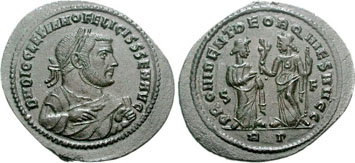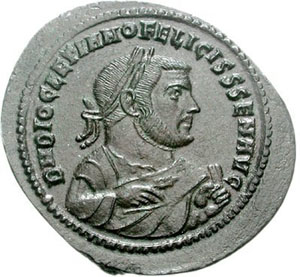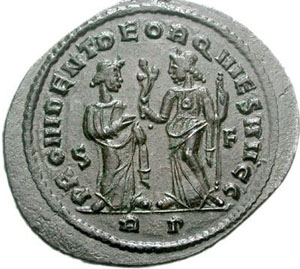NGC Ancients: Ten Reasons to Consider Ancients
Posted on 3/15/2011
Since at least the early 14th Century some of the most accomplished scholars and collectors have devoted themselves to ancient Greek and Roman coins. As touchstones to a glorious past that was “rediscovered” in the Renaissance, it is easy to see why all these centuries later ancient coins are still so avidly collected and studied.
Even with such a long and distinguished history, ancient coin collecting is obscure when compared to larger fields, such as modern U.S. and world coins. Because ancients are such a well-kept secret, their prices have remained relatively low.

There are many reasons to recognize the under-appreciated value of ancient coins, and to see the potential for them to reach a larger collector base. One reason is the significant expansion in the last thirty years of learning resources: many excellent books and internet sites have become available to make the collecting experience more rewarding.
Another increasingly important reason is the grading program launched by NGC at the start of 2009. It already has found much success, and has provided many novice collectors with the confidence to step forward because of NGC’s reputation and expertise.
In this column we'll discuss ten reasons why ancient coins deserve your attention, and why they represent an amazing opportunity for collectors in every budget range. To illustrate, we've chosen an attractive, yet affordable coin, which typically sells for $50 to $500, depending on its condition. It is a billon nummus of Diocletian, who came to power in A.D. 284 and was senior ruler of the Roman Empire until his abdication in A.D. 305.
1. Age. For most people the most remarkable thing about ancient coins is their age. This coin of Diocletian, struck in A.D. 305, is only about 1,700 years old. We say “only” because it is a relatively young piece compared to the first coins of Asia Minor and Greece, some of which are nearly 1,000 years older. Every ancient coin has been recovered from a hoard buried long ago for safekeeping, or has been a stray find that was accidentally lost while in circulation.

2. Historical value. Every ancient coin has historical value. The coin shown was struck within months of a noteworthy event in Roman history – the abdication of Diocletian on May 1, A.D. 305. He was a dedicated social architect whose vision of utopia began to fade upon his resignation. The Roman Empire experienced a series of civil wars that lasted nearly two decades, leaving the final victory to another towering figure of Roman history, Constantine I “the Great” (A.D. 307-337).
3. Rarity. Compared with most modern coins, ancients are rare. An ancient coin type of which perhaps 1,000 pieces are known is considered “common”; if as many as 50 are known it is merely thought to be “scarce”. If you translate this into modern coinage you would be describing acknowledged rarities. The abdication nummus of Diocletian shown above is common as ancient coins go: there are certainly a few thousand known of all types from all mints, though there might be less than 100 known of this particular issue.
4. Artistic value. Ancient coins are noted for their beauty, and often their high relief. The nummus of Diocletian shown above is simplistic and low-relief compared with many ancient coins, yet it is still an attractive piece. More to the point, it perfectly represents its place in history. By the late 4th Century A.D. imperial portraits had become purposely stereotyped to show emperors as something greater than mere mortals who might be just as prone to error or misfortune as one of their subjects. In other words, the “generic” quality of the portrait is exactly what we should expect.
5. Context. Unlike many antiquities from the ancient world, which often can only be described in general terms, coins often can be attributed with a great degree of precision. Sometimes they can be attributed to an exact place and a narrow time frame, or they are known to have been struck for a special occasion. Research indicates that the coin shown here was struck in the city of Rome sometime between March 1 and December 31 of A.D. 305. It is called an “abdication nummus” because its type relates to the retirement of the emperor Diocletian, who is portrayed on the obverse.
6. Condition. Ancient coins survive in a wide range of conditions, from worn-slick and corroded to Gem Mint State. It is still possible to find coins that preserve most every aspect of their original surface. Ancient artifacts seldom survive in such good condition, but so long as ancient coins were buried in top condition there is a good chance they will be unearthed in that state. Often they were buried in terracotta jars, in bags or boxes, and coins from the interior of the group can be well protected. All ancient coins require some conservation, but a professional can do much to reveal and preserve their original surfaces.

7. Heritage. The culture of many European and American nations is derived from a common ancestry in the ancient Greco-Roman world. It is plain to see in language, law, medicine, science, architecture, politics and many other fields. Our cultural ties to the ancient world help fuel our interest in ancient Greece and Rome. This, in turn, motivates many collectors to specialize in ancient coins. It is unlikely that our fascination with these ancient civilizations will ever be reduced – if anything, interest is on the rise.
8. Legacy of collecting. Beyond the attention often paid specifically to this field, Greek and Roman coins are beneficiaries of a larger interest in rare coin collecting. The hobby continues to draw new collectors, and an increasing percentage of them are discovering ancient coins. As long as people continue to recognize that coins are the most collectible objects of the ancient world, and the lure of collecting continues, there likely will be an increasing interest in the field.
9. Tangibility. The thrill of experiencing a direct connection to the ancient world cannot be underestimated. It is one thing to learn about the conflicts between Athens and Sparta, or to read about the lives of Rome’s “Twelve Caesars,” and it is quite another to build a collection of coins that relates to these topics. People, places and events become more vivid and meaningful when associated with something tangible. Indeed, it’s the very reason we go to museums rather than remain content merely to read about bygone civilizations.
10. Learning. Most important of all, forming a collection of ancient coins is an amazing opportunity to learn. Each coin is a starting point from which a collector can learn about a wide variety of subjects, including religion, politics, warfare, art, history, society, trade and archaeology. The list is so extensive that merely compiling it would be a significant undertaking. As so many collectors have already discovered, collecting ancient coins is nothing less than a lifetime adventure that can accommodate the goals of any numismatist.
Images courtesy of Classical Numismatic Group
Stay Informed
Want news like this delivered to your inbox once a month? Subscribe to the free NGC eNewsletter today!
